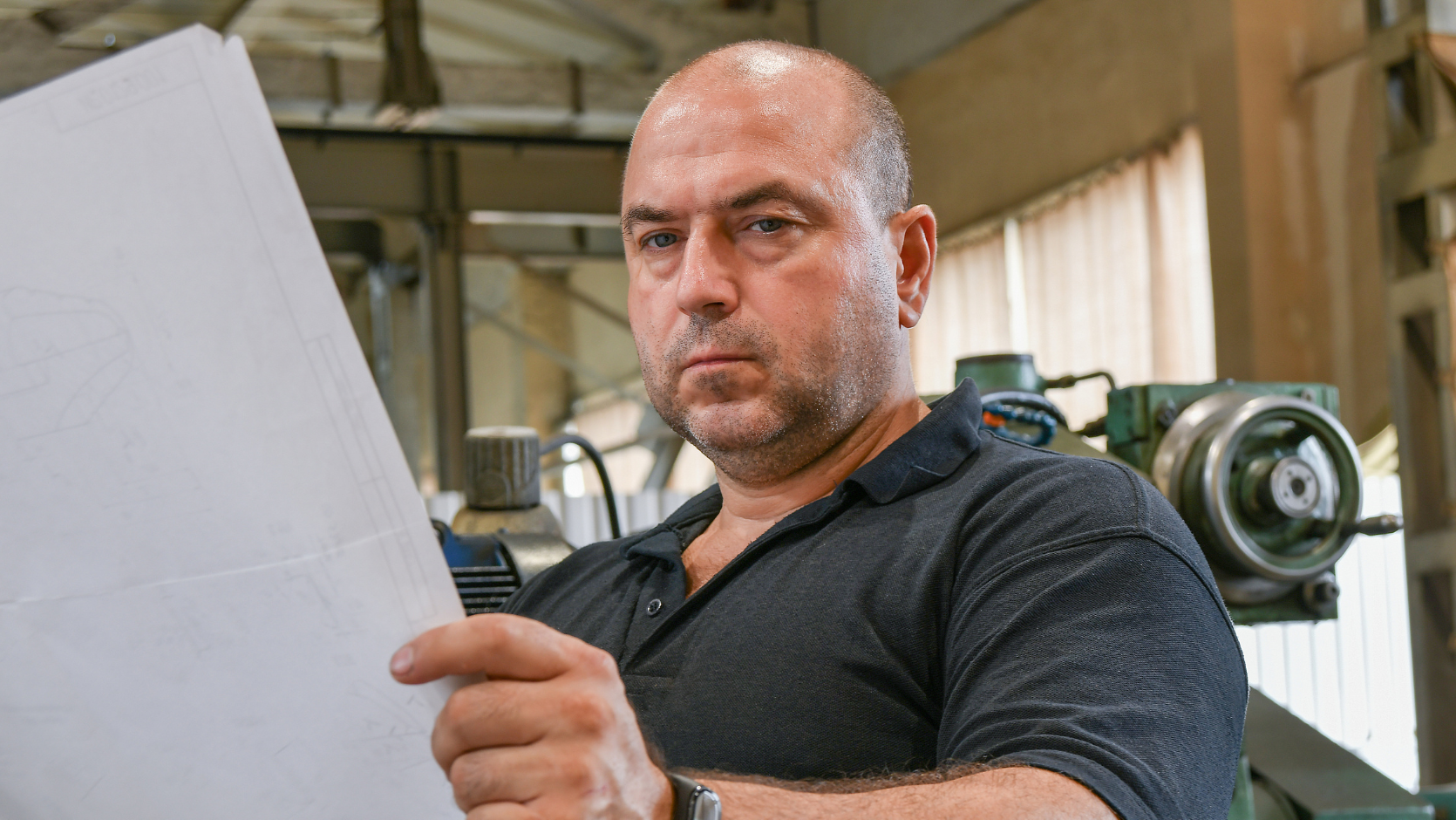The Facts
Collision between car and motorbike leads to serious injuries
In the mid-afternoon of 18 April 2016, a driver was driving her car along Nicholson Street, Crows Nest in Sydney, looking for a parking spot.
She had an aversion to parking in darkened parking stations and preferred instead to park on the street. In searching for a parking spot, she turned in front of an oncoming motor bike. The motorcyclist tried to evade the car, but there was a collision and the rider was thrown from his bike, suffering significant injuries.
Those injuries included a compound fracture of his right leg, with bone piercing through the skin above the knee, severe ligament damage, various broken bones, dislocated knee, foot laceration and a large open wound on the shin.
The motorcyclist had to stay in hospital for about a month where he had major surgery on his leg. It was not expected that he would be able to walk without assistance until at least four months after discharge from hospital.
Driver convicted of Negligent Driving Occasioning Grievous Bodily Harm
The court determined that the driver’s failure to keep a proper lookout was above the mid-range of objective seriousness for an offence of this nature. In other words, an independent observer would have found it extremely difficult to understand how she could not have seen the motorbike if she were keeping a proper lookout as the law requires.
There were no environmental factors that impeded the driver’s view. It was daylight with little or no traffic around and speed was not an issue. In fact, a witness estimated the motorbike’s speed at the time of the collision as between 20-25 kph.
The driver was convicted in the Local Court in the Downing Centre of Negligent Driving Occasioning Grievous Bodily Harm (OGBH) contrary to section 117 (1) (b) of the Road Transport Act 2013 and not giving way to an oncoming vehicle contrary to regulation 63 (3) of the Road Rules 2014.
Penalties for negligent driving
The penalties for the Negligent Driving (OGBH) for a first offence are nine months of imprisonment, a three year automatic licence disqualification with a minimum of twelve months and a fine of up to $2,200.00. The offence against the Road Rules carries a fine of up to $2,200.00.
The magistrate convicted the driver on a plea of guilty, reduced the licence disqualification to the minimum twelve months and fined her a total sum of $1,400.
Driver appeals to District Court against severity of sentence
The driver appealed the decision to the District Court, saying the sentencing was too harsh (severity appeal), asking the District Court to allow her appeal, quash the conviction and place her on a section 10 (1) (b) non-conviction good behaviour bond under the Crimes (Sentencing Procedure) Act 1999.
That way she would not have a criminal conviction recorded against her and would keep her licence.
It was up to the District Court to determine whether to allow her appeal and quash the conviction.














Expert commentary on the court's decision
District Court dismisses appeal and confirms convictions and penalties
In the case Babineau v R [2016] NSWDC 354, the appeal was dismissed and the convictions and penalties confirmed.
The appeal was heard on 17 November 2016 by Chief Magistrate Henson sitting as a District Court judge. The case sets out the factors the court takes into account in considering whether a section 10 non-conviction good behaviour bond is appropriate.
His Honour’s judgment is considered to be the current guideline on what factors the court will consider in exercising its discretion under section 10, especially for serious traffic offences.
Subjective factors and section 10 submissions
In considering whether it can deal with an offence without recording a conviction, the court has to take into consideration what are known as subjective factors.
These are set out in Section 10 (3) of the Crimes (Sentencing Procedure) Act 1999. They are:
In the case of traffic offences, the court will also consider a person’s need for a licence, participation in counselling or traffic offender education programs and their driving and criminal history.
Another factor taken into consideration is when the plea of guilty was entered. If it is entered at the earliest available opportunity, the offender is entitled to a 25% discount on sentence.
Genuine remorse and contrition are also persuasive factors when seeking leniency.
To what extent can courts show leniency for good character?
Despite the fact that the driver, Ms Martha Babineau, was regarded by the court as a person of prior good character, caselaw suggests that in serious traffic matters such as this, courts have to be careful in showing leniency for good character “to avoid giving the impression that persons of good character may, by their irresponsible actions… take the lives of others and yet receive lenient treatment” (R v MacIntyre [1988] 38 A Crim R 135 at 139).
It was also evident to the judge that Ms Babineau was remorseful and sorry for her actions and that her conduct had “weighed heavily upon her”.
Driver’s remorse and prospects of rehabilitation
The appellant had also completed the Traffic Offender Programme and from that gained insights into her offending behaviour. These included how saddened she was at causing an accident and injuring another human being and how her failure to properly manage her motor vehicle had impacted on the life of someone else.
This was set out in a letter she wrote to the court. As a result the judge was satisfied that Ms Babineau had genuine prospects of rehabilitation.
The court then had to consider the combined effect of the subjective factors favourable to the appellant and measure them against the objective seriousness of the offence.
Subjective factors favourable to the driver deemed to be insufficient
The judge determined that even though there were strong subjective factors favourable to Ms Babineau, they were not enough. The offence was too serious to warrant a non-conviction under section 10. He stated:
Deterring the commission of offences which involve a threat to public safety would effectively be undermined where one section of the broader community is dealt with in an extremely lenient manner simply to maintain the use of a licence while others were not.
In addition, the judge found that Ms Babineau’s driving history did not assist her, as the numerous speeding fines she had accumulated in recent years reflected “a less than appropriate commitment to public safety”.
The judge pointed out that general deterrence (deterring the wider community) and specific deterrence (deterring the offender) would be “almost completely ineffectual” if the penalties set down by parliament were rendered secondary to the personal wishes of an offender.
Would a criminal conviction impact on the driver’s ability to work?
On the question of a criminal conviction impacting Ms Babineau’s employment, the judge stated that there was no evidence before the court that this would happen.
It is also interesting to note that in the case of working with children checks, the legislative requirements state that a conviction “includes a finding that the charge for an offence is proven, or that a person is guilty of an offence, even though the court does not proceed to a conviction”. (See the Child Protection (Working with Children) Act 2012.)
Would the driver’s loss of licence cause exceptional hardship to her daughter?
The court then considered in detail the submission concerning how a loss of licence would impact on Ms Babineau’s daughter, that is, hardship to third parties.
There was evidence from the Northern Sydney Local Health District and a doctor that confirmed the daughter’s diagnosis and how she was assisted by her mother visiting her regularly. There were concerns raised by her case manager that the daughter’s care “may be compromised” if her mother could not visit her regularly.
While the judge accepted this proposition as likely, he noted that the Community Mental Health team at Royal North Shore contributed significantly to the daughter’s assistance and management. He stated:
Harsh though it may seem… there are arrangements in place to assist the appellant’s daughter and which appear to operate to a satisfactory level. I have difficulty against that background arriving at a finding that the hardship that will be caused to the appellant’s daughter ought to be regarded as exceptional…
Courts would be doing less than their duty, especially where retribution, deterrence and protection of society are the predominant considerations if they place excessive emphasis on an offender’s personal circumstances to the exclusion of those in society in general.
Severity of the victim’s injuries taken into account
A final aspect to the appeal and the consideration of a section 10 non-conviction was how serious the offending was and the severity of the victim’s injuries. The court determined that the objective seriousness of the offending was above the middle range and the injuries to the victim were “extremely serious”.
Quoting the judgment in R v Mauger [2012] NSWCCA 51, the judge stated:
Where the offence that is committed is an objectively serious one and where general deterrence and denunciation are important factors in sentencing for that offence, the scope of the operation of Section 10 decreases. The section must operate in the context of the general principle that the penalty imposed for any offence should reflect the objective seriousness of that offence.
The judge concluded by saying: “If the impact of the crime on the victim, general deterrence and denunciation are to have practical meaning and effect they cannot simply be ignored because of the consequences of conviction”.
For more information please see Who was to blame for a drunken motorcycle accident? Which case won?
Section 10 non-conviction bonds soon to be replaced by Conditional Release Orders (CRO)
Author’s note: Section 10 non-conviction bonds will soon be replaced by Conditional Release Orders (CRO) as part of a range of changes to sentencing options in NSW. They will be available for less serious offences.
CROs can be imposed with or without conviction. The court will also be able to impose conditions such as supervision, non-association requirements and place restrictions. The court can also impose a conviction on a CRO if appropriate. CROs can be imposed for up to two years.
For further information, please see the NSW Justice web page on sentencing reform.